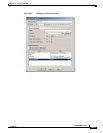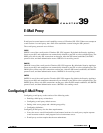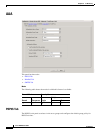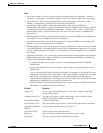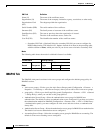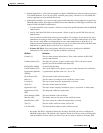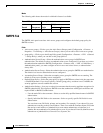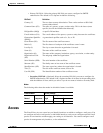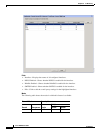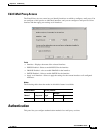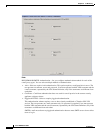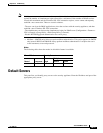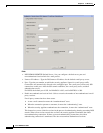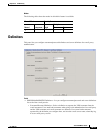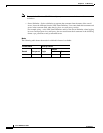
39-7
Cisco ASDM User Guide
OL-16647-01
Chapter 39 E-Mail Proxy
Access
–
Primary DN Field—Select the primary DN field you want to configure for SMTPS
authorization. The default is CN. Options include the following:
–
Secondary DN Field—(Optional) Select the secondary DN field you want to configure for
SMTPS authorization. The default is OU. Options include all of those in the preceding table,
with the addition of None, which you select if you do not want to include a secondary field.
Modes
The following table shows the modes in which this feature is available:
Access
The E-mail Proxy Access screen lets you identify interfaces on which to configure e-mail proxy. You
can configure and edit e-mail proxies on individual interfaces, and you can configure and edit e-mail
proxies for one interface and then apply your settings to all interfaces. You cannot configure e-mail
proxies for management-only interfaces, or for subinterfaces.
DN Field Definition
Country (C) The two-letter country abbreviation. These codes conform to ISO 3166
country abbreviations.
Common Name (CN) The name of a person, system, or other entity. This is the lowest (most
specific) level in the identification hierarchy.
DN Qualifier (DNQ) A specific DN attribute.
E-mail Address (EA) The e-mail address of the person, system or entity that owns the certificate.
Generational Qualifier
(GENQ)
A generational qualifier such as Jr., Sr., or III.
Given Name (GN) The first name of the certificate owner.
Initials (I) The first letters of each part of the certificate owner’s name.
Locality (L) The city or town where the organization is located.
Name (N) The name of the certificate owner.
Organization (O) The name of the company, institution, agency, association, or other entity.
Organizational Unit
(OU)
The subgroup within the organization.
Serial Number (SER) The serial number of the certificate.
Surname (SN) The family name or last name of the certificate owner.
State/Province (S/P) The state or province where the organization is located.
Title (T) The title of the certificate owner, such as Dr.
User ID (UID) The identification number of the certificate owner.
Firewall Mode Security Context
Routed Transparent Single
Multiple
Context System
• — • ——



